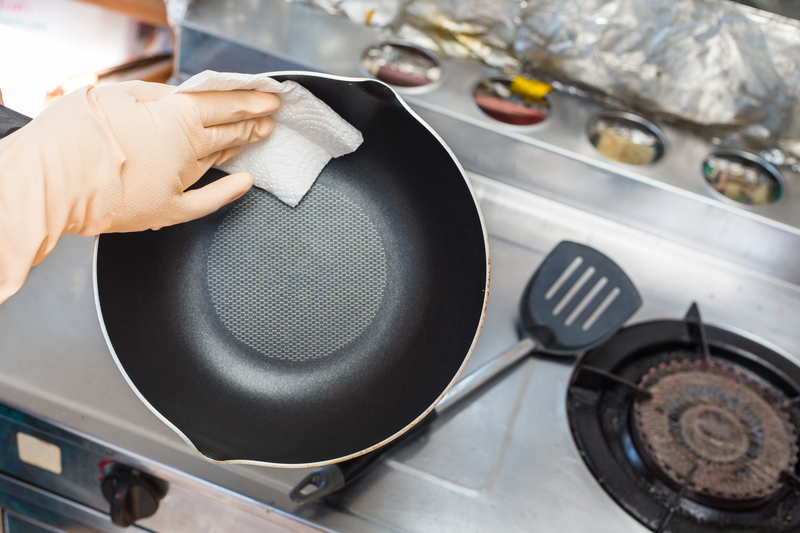Expert Tips on Removing Mould for Pristine Window Sills
Posted on 21/08/2025
Expert Tips on Removing Mould for Pristine Window Sills
Are you grappling with unsightly mould and mildew on your window sills? Not only does it detract from your home's beauty, but mould also poses significant health hazards. In this comprehensive guide, we'll unveil expert techniques for removing mould from window sills, maintaining their pristine appearance, and preventing future outbreaks. Whether you face stubborn black mould or a mild case of mildew, these practical, actionable tips will help you restore cleanliness and protect your home.

Understanding Mould Growth on Window Sills
Mould thrives wherever moisture, warmth, and organic material intersect--making window sills a common target. Inadequate ventilation, condensation, and humidity are all culprits. If not addressed, mould can compromise both your indoor air quality and the longevity of window frames.
- Health Risks: Mould releases spores, which may cause allergies, asthma, headaches, or respiratory issues.
- Structural Damage: Over time, it degrades paint, wood, and caulking, leading to expensive repairs.
- Aesthetic Concerns: Black, green, or white stains undermine your home's appeal.
Identifying Different Types of Window Sill Mould
Recognizing the kind of mould you're dealing with is crucial for selecting the right cleaning method. The most common types include:
- Black Mould (Stachybotrys chartarum): Renowned for its toxic spores and stubborn stains.
- White Mould: Often appears powdery and is generally less hazardous, but still undesirable.
- Green Mould: Typically associated with damp areas--can appear slimy or fuzzy.
Each requires attentive removal to restore pristine window sills free of mould.
Before You Begin: Essential Safety Precautions
- Wear protective gloves and a face mask to limit contact with mould spores.
- Ventilate the area by opening windows and doors.
- Use safety goggles to prevent irritation to your eyes.
- Never mix cleaning chemicals (e.g., bleach and ammonia), as this can create dangerous fumes.
Tip: If your window sills have extensive mould (over 1 square meter) or if black mould keeps returning, it's advisable to seek professional mould remediation services.
Step-by-Step Guide: How to Remove Mould from Window Sills
Follow these professional steps for safe and thorough window sill mould removal:
Step 1: Gather Your Supplies
- Disposable gloves and face mask
- Soft brush or an old toothbrush
- Microfiber cloths or disposable paper towels
- Spray bottle
- Vacuum with HEPA filter (optional, but recommended)
- Cleaning solution (see below)
Step 2: Select the Right Cleaning Solution
Choose a cleaning agent tailored to the level and type of contamination:
- White vinegar: A natural mould killer. Use undiluted for moderate outbreaks.
- Hydrogen peroxide (3%): A powerful disinfectant; spray directly on affected areas.
- Baking soda paste: Mildly abrasive and deodorizing--mix with water to create a paste.
- Commercial mould remover: For severe infestations and stubborn black mould on window sills.
- Bleach solution (last resort): Mix 1 part bleach to 10 parts water. Effective but use with caution--test first on inconspicuous areas to avoid discoloration.
Step 3: Dry Scrub the Mould
- Brush away as much visible mould as possible with a dry brush. This loosens the toughest patches and prevents smearing during wet cleaning.
- Dispose of debris immediately in a sealed plastic bag.
Step 4: Apply Your Chosen Mould Remover
- Spray or dab the cleaning solution liberally onto the affected areas.
- Let it sit for 10-15 minutes to penetrate and kill spores. This step is crucial for effective window sill mould eradication.
- For paste solutions, spread evenly and allow to dry slightly before scrubbing.
Step 5: Scrub Stains and Residue
- Using a clean brush or old toothbrush, gently scrub in circular motions until the stains lift.
- Wipe off excess residues with a damp microfiber cloth or disposable towels.
Repeat as necessary until no visible mould remains.
Step 6: Rinse and Dry Thoroughly
- Wipe down the area with a clean, damp cloth to remove any cleaner remnants.
- Dry the window sill completely using a towel or let it air dry, as residual moisture can trigger mould recurrence.
Step 7: Dispose of Contaminated Cleaning Materials
Seal used towels, paper, and gloves in a plastic bag and discard to prevent accidental spread of spores.
Natural Remedies vs. Commercial Solutions: Which Is Best for Window Sill Mould?
When it comes to removing mould from uPVC and wood window sills, both natural and chemical solutions have their pros and cons:
-
Natural Cleaners (like vinegar and baking soda):
- Benefits: Eco-friendly, non-toxic, cost-effective, safe for families and pets.
- Drawbacks: May struggle with heavy infestations or deep-rooted black mould.
-
Commercial Mould Removers:
- Benefits: Fast-acting; eradicates most mould varieties including stubborn black or green moulds.
- Drawbacks: Possible harsh chemical odor, may require extra ventilation, could discolor sensitive surfaces if not used as directed.
Tip: Start with a natural method on lightly stained sills; escalate to commercial products only for persistent or extensive mould problems.
Special Considerations for Wooden and uPVC Window Sills
How to Remove Mould from Wooden Window Sills
- Use minimal water: Wood is porous; avoid soaking to prevent warping.
- Opt for baking soda paste or diluted vinegar for gentle cleaning.
- Sand lightly if stains persist, followed by fresh sealant or paint to restore.
Mould Removal for uPVC Window Sills
- uPVC sills are less porous, allowing you to use gentle (non-abrasive) commercial cleaners.
- Wipe and don't scrub too hard; avoid scratching the surface.
- Buff with a microfiber cloth after cleaning for a pristine, streak-free finish.
How to Prevent Mould Growth on Window Sills
Once you've achieved sparkling clean window sills, take steps to prevent future growth:
- Improve ventilation: Open windows regularly, especially after showers or cooking. Use exhaust fans in critical areas.
- Control humidity: Use a dehumidifier to keep indoor relative humidity below 60%.
- Upgrade window insulation: Double glazing helps reduce condensation build-up.
- Wipe up condensation promptly: Especially important during cold months.
- Inspect seals and caulking: Repair any leaks or gaps that allow water ingress.
- Regular cleaning: Dust and clean window sills weekly to remove organic buildup and spores.

Frequently Asked Questions About Window Sill Mould Removal
Q: Will vinegar kill black mould on window sills?
Yes, vinegar is a natural anti-fungal agent. Spray undiluted vinegar directly onto the black mould, let it sit for at least an hour, then scrub and wipe. For heavy infestations, combine with baking soda or try hydrogen peroxide for added potency.
Q: Is it safe to paint over mould on window sills?
Never paint over mould! It must be completely killed and removed, or it will continue to grow under the paint, causing future peeling and health problems. Only paint after removing all traces of mould and ensuring the material is completely dry.
Q: What if mould keeps returning after cleaning?
Persistent mould indicates an ongoing moisture problem. Investigate window leaks, poor ventilation, or high indoor humidity. Repair, upgrade, and adjust as needed to resolve the underlying cause; otherwise, even thorough cleaning will only provide temporary relief.
Q: Can professional help be necessary?
If you have allergies, if the mould covers a large area, or if it keeps coming back despite your efforts, professional mould remediation might be necessary. Experts have industrial-grade equipment and treatments to guarantee long-lasting mould removal from window sills and frames.
The Takeaway: Achieve Immaculate, Healthy Window Sills
Mould on window sills is more than an aesthetic issue--it's a matter of health and home preservation. By following these expert tips and proven cleaning techniques, you can remove mould from window sills efficiently and safely. Commit to regular maintenance, monitor your home's humidity, and take prompt action at the first signs of trouble.
With diligence, pristine window sills free from mould are within your reach--ensuring a healthier, brighter, and more beautiful living space for you and your family!
```




